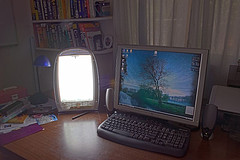BIOMEDICAL ENGINEER JOBS IN PUNE
To repair & Maintain Biomedical Equipments,
Help in Procurment of Biomedical Equipments
Follow up with vendors for smooth operation of equipments
Scientists at the U.S. Department of Energy’s Brookhaven National Laboratory have found a new way to use a synthetic form of DNA to control the assembly of nanoparticles — this time resulting in switchable, three-dimensional and small-cluster structures that might be useful, for example, as biosensors, in solar cells, and as new materials for data storage. The work is described in Nature Nanotechnology, published online December 20, 2009.
According to surveys biomedical engineering field is most upcoming field all over the world
breakthroughs in biomedical field have been the most in last decade or so!
Exposure to an MRI magnetic field can cause unintended cardiac stimulation and considerably alter pulse in patients implanted with pacemakers–conditions that can have potentially devastating consequences–according to research published Dec. 15 in BioMedical Engineering Online.
Howard I. Bassen, a researcher with the FDA in Rockville, Md., and Gonzalo G. Mendoza, a biomedical engineer at Catholic University of America in Washington, D.C., measured the electric fields (E-fields) induced near the tips of pacemakers by a simulated MRI gradient system to assess the risks involved in patients with a cardiac device who undergo MRI.

According to the researchers, “patients are generally not allowed (by present practices) to undergo MRI procedures if they have implanted cardiac and neurological stimulations devices,” however, some clinicians “condone scanning patients” implanted with cardiac pacemakers. In addition, Bassen and Gonzalo noted that there has been a push to develop medical implants that are MRI compatible.
The Respiratory System is Designed to Bring in Oxygen and Remove Carbon Dioxide

Definition
Phototherapy, or light therapy, is the administration of doses of bright light in order to normalize the body‘s internal clock and/or relieve depression.
DESCRIPTION
Phototherapy is generally administered at home. The most commonly used phototherapy equipment is a portable lighting device known as a light box. The box may be mounted upright to a wall, or slanted downwards towards a table. The patient sits in front of the box for a prescribed period of time (anywhere from 15 minutes to several hours).